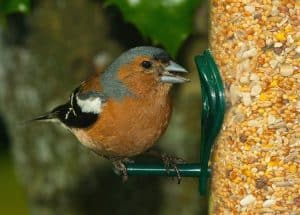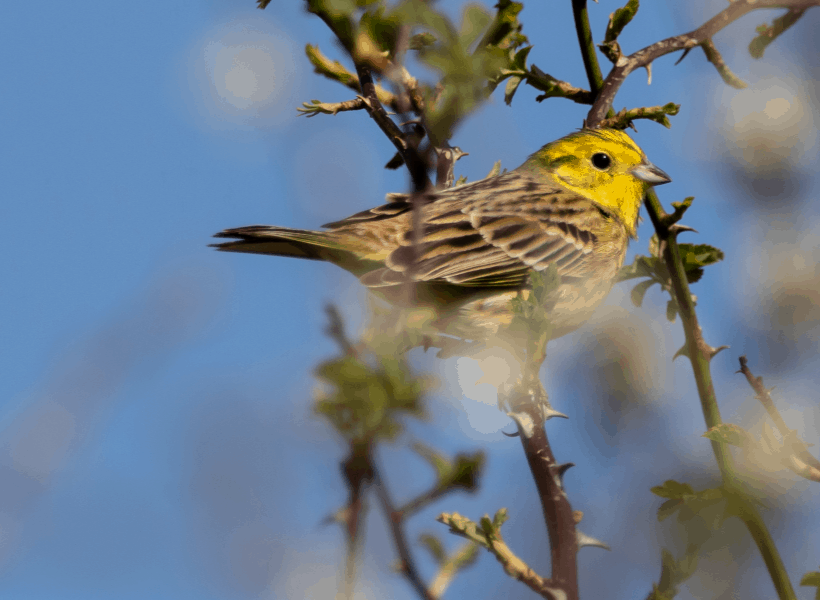I remember the first time I went to pick up some birds – canaries from memory – and saw a goldfinch in a cage. I couldn’t believe how much the bird looked like our garden birds and then found out that it was the same species. Only this bird has been captive bred, had never been near the wild and was legal to keep in our aviaries. I was hooked!
Since then, I have learned a little more about the rules and regulations on breeding and selling British birds so I thought I would share that here.
Wildlife and Countryside Act 1981

Let’s start at the top – the law covering the breeding and selling of British birds is called the Wildlife and Countryside Act 1981. The idea of the act was to stop the killing or taking of wild animals and birds and to restrict the introduction of some species, as well as some plants. It is a big and complicated piece of legislation that doesn’t affect us finch keepers in the majority.
The act uses ‘schedules’ to refer to the different species and the regulations relating to them. It starts with Schedule 1 which refers to species from the Great Bittern, the Golden Eagle through to various species such as kingfishers, owls, waterfowl as well as a few smaller birds such as the Brambling, the Crossbill and three of the bunting species.
Schedule 2 of the act refers to people are licensed to remove birds from the wild or take their eggs. To do this you have to have a special license and this usually applies to people working in conservation and similar projects.
Schedule 3 is the one that effects most of us bird keepers. It adds an amendment to Schedule 1 that says you can sell species on the list provided that you can provide proof that they have been bred in captivity and have the right ring on them.
The law in action
So what does all this mean on a practical level for bird keepers? For starters, it means if you have any birds in your aviary that are natural British species, such as goldfinch, greenfinch and bullfinch, then these birds much be rung for you to sell them.
There are only two places to get the officially acceptable rings for these species – the British Bird Council (BBC) and the International Ornithological Association (IOA). Both these organisations have websites where you can order the correct rings for the bird species in question. The ring code is based around the size of the bird to ensure the ring is comfortable once the bird is an adult. Common birds and their codes include:
| Size Code | Bird species |
| B | Common redpoll, siskin, twite |
| C | Chaffinch, goldfinch, linnet, mealy redpoll |
| D | Brambling, bullfinch |
| D+ | Yellow bunting |
| E | Greenfinch |
| G | Skylark |
| J | Common crossbill, Scottish crossbill |
| K | Songthrush, waxwing |
| M | Blackbird, starling |
The websites also include information about how to put the ring onto the bird. This is where it is very specific – the rings must be put into the chick at around 5-6 days old. This is the way to show that the bird has been bred in captivity and not wild caught then rung afterwards.
Selling the birds
The rules on selling these birds state that all bird listed in Schedule 3, around 19 commonly bred species, have to be rung to be sold but no further documentation is required. If you are unsure if the bird is rung correctly, then you can ask the seller for a receipt that details their own information, the species of the bird and the ring ID. Some buyers even ask for the ring numbers of parent birds but this isn’t a requirement.

Schedule 4 birds can only be sold or exhibited with the issue of a license and need to be ringed, tagged or microchipped depending on the details of the species.
Any British birds that don’t fall under these schedules, there is still the requirement for them to correctly rung in order to be sold or exhibited. However, they fall under a general licensed (GL18/14) that means paperwork is required to confirm their captivity breeding (this requirement has been removed in Scotland).
Hybrids and mules do not have to be rung under these rules because they are not technically a British bird, rather a crossing of a British bird and another species. The classic example of this are the canary mules that are crossed with birds such as the goldfinch or greenfinch.
Birds that aren’t rung
The biggest area of confusion comes from British birds that have been captive bred but aren’t rung for one reason or another. Often this is due to the parents breeding without the keeper realising and missing the ringing opportunity. Or sometimes the chick is rung and the parent manages to remove the ring.
The result is that a bird that isn’t rung cannot be sold or exhibited. However, it can be gifted to another bird keeper. When receiving the gift of a bird that isn’t rung, you should take the details of the seller and information about the ring numbers of the parent birds to cover yourself in case anyone ever asks where the birds originated.
Keeping within the law
While the ringing of chicks is an awkward job that many of us would rather avoid, it is a worthwhile process to ensure we are allowed to keep these amazing birds in captivity. If rules aren’t followed, there is always the risk that tighter regulations or bans are brought into force and we lose the ability to see these fantastic birds in our aviaries.
How can we contact other breeders to trade birds so there isn’t genetic inbreeding? I am in northeastern usa
It can be tricky, I must admit my best way of finding birds has been through Facebook groups. I know you can’t sell there now but you can make good connections and get to know other breeders and where sales happen. Hope this helps!
5